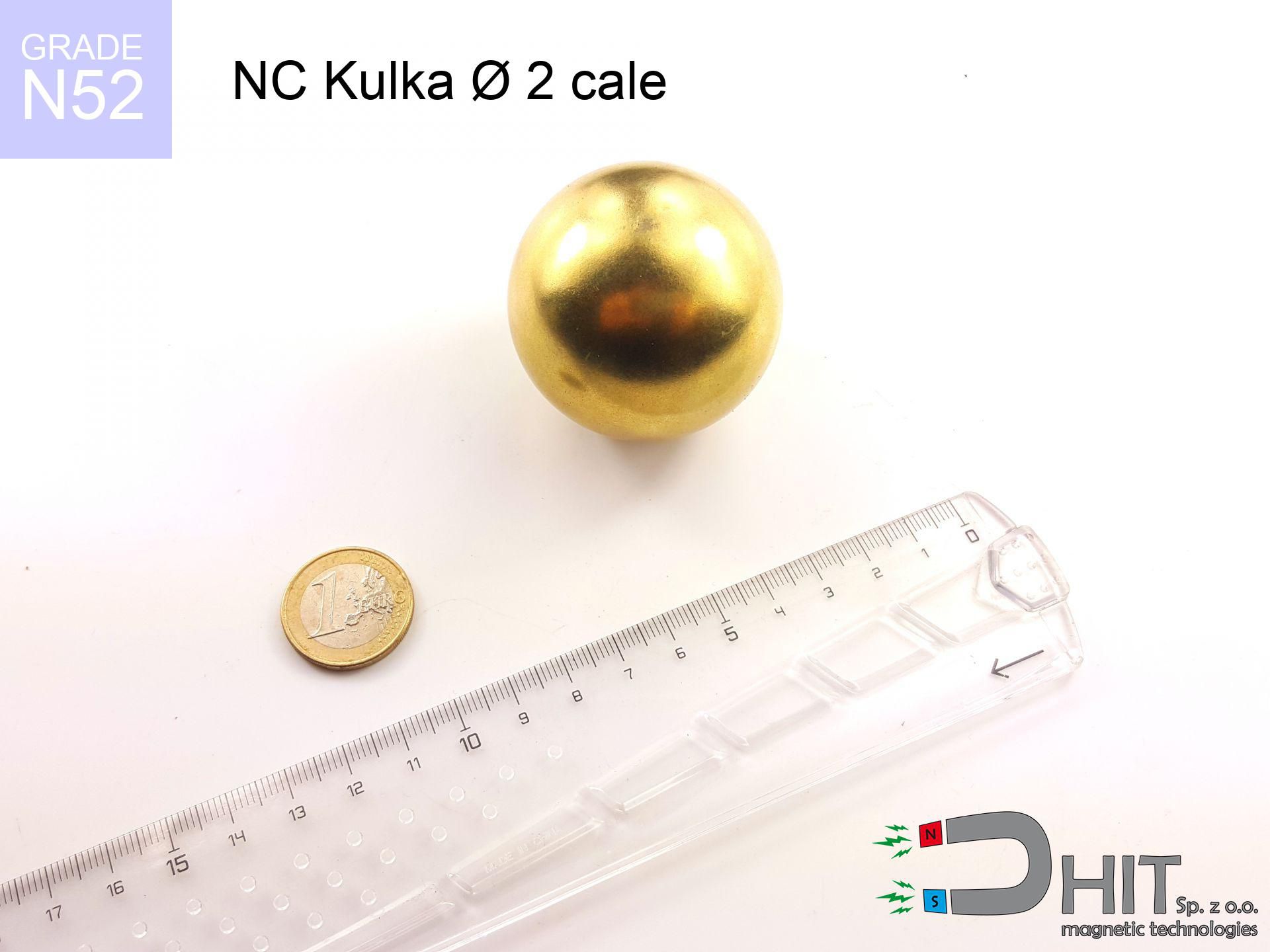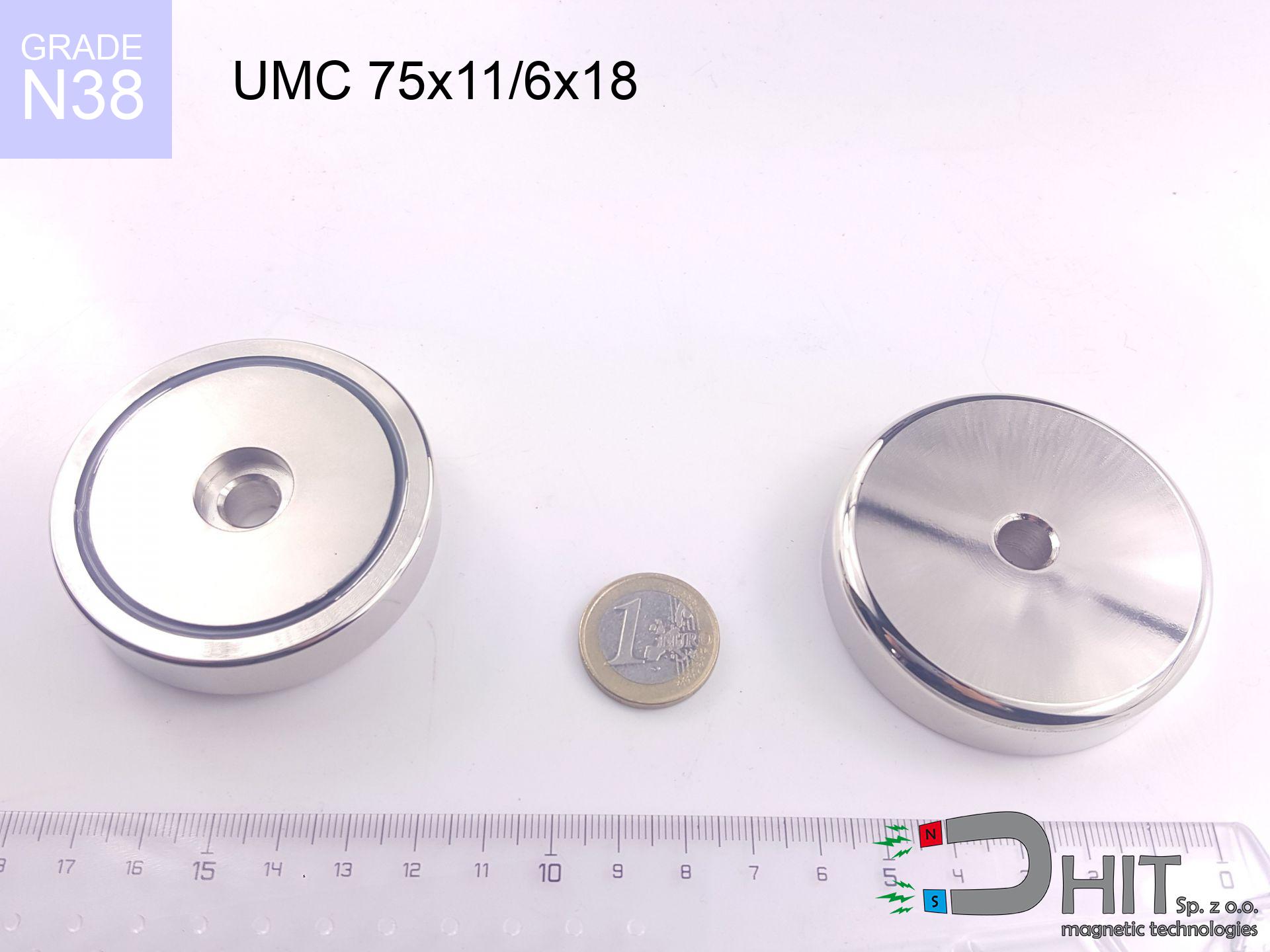NC kulka fi 2 cale / N52 - neocube
neocube
Catalog no 120453
GTIN: 5906301812692
Weight
1098 g
Magnetization Direction
↑ axial
Coating
[Gold] gold
1200.00 ZŁ with VAT / pcs + price for transport
975.61 ZŁ net + 23% VAT / pcs
bulk discounts:
Need more?Not sure which magnet to buy?
Call us
+48 888 99 98 98
otherwise drop us a message by means of
request form
our website.
Strength and structure of magnetic components can be estimated with our
magnetic calculator.
Orders submitted before 14:00 will be dispatched today!
NC kulka fi 2 cale / N52 - neocube
Magnetic properties of material N52
Physical properties of NdFeB
Shopping tips
Advantages and disadvantages of neodymium magnets NdFeB.
In addition to their exceptional magnetic power, neodymium magnets offer the following advantages:
- They virtually do not lose strength, because even after 10 years, the decline in efficiency is only ~1% (based on calculations),
- They show exceptional resistance to demagnetization from outside magnetic sources,
- The use of a decorative gold surface provides a eye-catching finish,
- They exhibit superior levels of magnetic induction near the outer area of the magnet,
- These magnets tolerate elevated temperatures, often exceeding 230°C, when properly designed (in relation to profile),
- The ability for accurate shaping and adaptation to custom needs – neodymium magnets can be manufactured in multiple variants of geometries, which enhances their versatility in applications,
- Significant impact in cutting-edge sectors – they are used in data storage devices, rotating machines, clinical machines and sophisticated instruments,
- Relatively small size with high magnetic force – neodymium magnets offer impressive pulling strength in small dimensions, which makes them ideal in miniature devices
Disadvantages of rare earth magnets:
- They can break when subjected to a sudden impact. If the magnets are exposed to mechanical hits, it is suggested to place them in a protective enclosure. The steel housing, in the form of a holder, protects the magnet from breakage and increases its overall strength,
- They lose strength at high temperatures. Most neodymium magnets experience permanent decline in strength when heated above 80°C (depending on the shape and height). However, we offer special variants with high temperature resistance that can operate up to 230°C or higher,
- Due to corrosion risk in humid conditions, it is recommended to use sealed magnets made of plastic for outdoor use,
- Limited ability to create internal holes in the magnet – the use of a magnetic holder is recommended,
- Possible threat linked to microscopic shards may arise, if ingested accidentally, which is significant in the protection of children. Additionally, miniature parts from these devices may interfere with diagnostics once in the system,
- Due to expensive raw materials, their cost is relatively high,
Magnetic strength at its maximum – what affects it?
The given holding capacity of the magnet represents the highest holding force, determined under optimal conditions, specifically:
- using a steel plate with low carbon content, serving as a magnetic circuit closure
- with a thickness of minimum 10 mm
- with a refined outer layer
- with no separation
- under perpendicular detachment force
- under standard ambient temperature
Impact of factors on magnetic holding capacity in practice
In practice, the holding capacity of a magnet is affected by these factors, arranged from the most important to the least relevant:
- Air gap between the magnet and the plate, as even a very small distance (e.g. 0.5 mm) can cause a drop in lifting force of up to 50%.
- Direction of applied force, because the maximum lifting capacity is achieved under perpendicular application. The force required to slide the magnet along the plate is usually several times lower.
- Thickness of the plate, as a plate that is too thin causes part of the magnetic flux not to be used and to remain wasted in the air.
- Material of the plate, because higher carbon content lowers holding force, while higher iron content increases it. The best choice is steel with high magnetic permeability and high saturation induction.
- Surface of the plate, because the more smooth and polished it is, the better the contact and consequently the greater the magnetic saturation.
- Operating temperature, since all permanent magnets have a negative temperature coefficient. This means that at high temperatures they are weaker, while at sub-zero temperatures they become slightly stronger.
* Lifting capacity was measured by applying a polished steel plate of suitable thickness (min. 20 mm), under perpendicular detachment force, whereas under parallel forces the holding force is lower. Moreover, even a minimal clearance {between} the magnet and the plate lowers the holding force.
Caution with Neodymium Magnets
The magnet is coated with nickel - be careful if you have an allergy.
Studies show a small percentage of people have allergies to certain metals, including nickel. An allergic reaction often manifests as skin redness and rash. If you have a nickel allergy, you can try wearing gloves or simply avoid direct contact with nickel-plated neodymium magnets.
Neodymium magnets can become demagnetized at high temperatures.
Although magnets have shown to retain their effectiveness up to 80°C or 175°F, this temperature may vary depending on the type of material, shape, and intended use of the magnet.
Make sure not to bring neodymium magnets close to the TV, wallet, and computer HDD.
Strong magnetic fields emitted by neodymium magnets can damage magnetic storage media such as floppy disks, credit cards, magnetic ID cards, cassette tapes, video tapes, or other devices. In addition, they can damage televisions, VCRs, computer monitors, and CRT displays. You should especially avoid placing neodymium magnets near electronic devices.
Dust and powder from neodymium magnets are flammable.
Avoid drilling or mechanical processing of neodymium magnets. If the magnet is crushed into fine powder or dust, it becomes highly flammable.
Keep neodymium magnets away from GPS and smartphones.
Intense magnetic fields generated by neodymium magnets interfere with compasses and magnetometers used in navigation, as well as internal compasses of smartphones and GPS devices.
Neodymium Magnets can attract to each other due to their immense internal force, causing the skin and other body parts to get pinched and resulting in significant injuries.
If you have a finger between or alternatively on the path of attracting magnets, there may be a large cut or even a fracture.
People with pacemakers are advised to avoid neodymium magnets.
In the case of neodymium magnets, there is a strong magnetic field. As a result, it interferes with the operation of a heart pacemaker. Even if the magnetic field does not affect the device, it can damage its components or deactivate the entire device.
Neodymium magnets are the strongest magnets ever created, and their strength can shock you.
Read the information on our website on how to properly utilize neodymium magnets and avoid significant harm to your body and unintentional disruption to the magnets.
Magnets made of neodymium are fragile as well as can easily break and shatter.
Neodymium magnets are characterized by significant fragility. Neodymium magnets are made of metal and coated with a shiny nickel surface, but they are not as hard as steel. At the moment of collision between the magnets, small metal fragments can be dispersed in different directions.
Magnets should not be treated as toys. Therefore, it is not recommended for children to have access to them.
Neodymium magnets are not toys. Be cautious and make sure no child plays with them. In the case of swallowing multiple magnets simultaneously, they can attract to each other through the intestinal walls. In the worst case scenario, this can lead to death.
Exercise caution!
Please see the article - What danger lies in neodymium magnets? You will learn how to handle them properly.



![SM 32x175 [2xM8] / N52 - magnetic separator SM 32x175 [2xM8] / N52 - magnetic separator](https://cdn3.dhit.pl/graphics/products/sm-32x175-2xm8-cep.jpg)
![MPL 40x10x4x2[7/3.5] / N38 - lamellar magnet MPL 40x10x4x2[7/3.5] / N38 - lamellar magnet](https://cdn3.dhit.pl/graphics/products/mpl40x10x4x27-3.5-suw.jpg)



